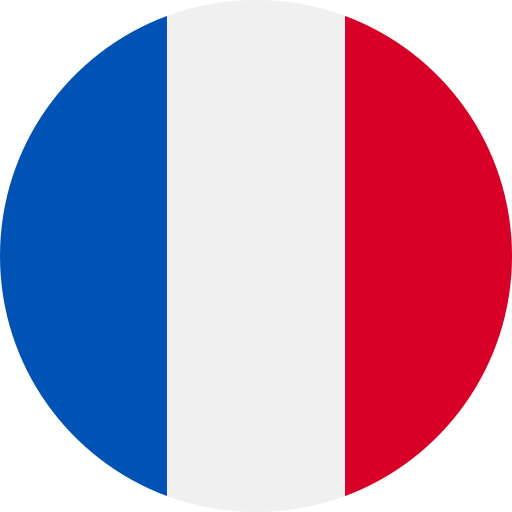Key Takeaways
- Historical Roots: The French language evolved from Latin during the Roman Empire, transitioning to Old French by the 9th century, influenced by regional dialects and invasions.
- Middle French Development: By the 12th century, Middle French emerged marked by significant changes in grammar and vocabulary, aided by literary contributions from influential writers.
- Standardization of Modern French: The late 15th century saw efforts to standardize the language, particularly with the establishment of the Académie Française in 1635 to regulate grammar and vocabulary.
- Cultural Influences: Globalization has shaped contemporary French through borrowed vocabulary from English and other languages while maintaining its unique characteristics.
- Language Preservation: Despite modern influences, there are ongoing efforts to preserve linguistic integrity and promote awareness of regional dialects within France’s cultural heritage.
- Continued Evolution: Contemporary French reflects a dynamic evolution that balances tradition with modern communication trends across various fields.
Have you ever wondered how the French language evolved into what it is today? The timeline of French language history in France is a fascinating journey filled with cultural shifts, invasions, and innovations that shaped this beautiful tongue. From its Latin roots to modern-day usage, understanding this evolution can deepen your appreciation for the language and its rich heritage.
Overview of French Language History
The French language’s history spans over a millennium, beginning with its roots in Latin during the Roman Empire. As the Romans expanded their territory, they brought Latin to what is now France. This early form evolved into Old French by the 9th century, influenced by regional dialects and the languages of invading tribes like the Franks.
By the 12th century, Middle French emerged from this evolution. It featured significant changes in grammar, vocabulary, and pronunciation. The influence of literature became apparent as writers like Marie de France and Chrétien de Troyes popularized literary forms that contributed to standardizing the language.
The transition to Modern French began in the late 15th century, marked by efforts to establish a more uniform language across regions. The establishment of the Académie Française in 1635 played a crucial role in regulating grammar and vocabulary. While this institution aimed for linguistic uniformity, regional dialects persisted throughout France.
In contemporary times, French continues adapting to global influences while retaining its unique characteristics. Borrowed words from English and other languages reflect cultural exchange and modern communication trends. Today’s French speakers enjoy a rich linguistic heritage that reflects centuries of change shaped by social dynamics and historical events.
Understanding this timeline enhances your appreciation for not just the language itself but also its cultural significance within France and beyond.
Early Influences on the French Language
The early influences on the French language set the foundation for its evolution. Various cultures and languages contributed significantly to shaping what we recognize today as French.
Roman Influence
Roman conquest introduced Latin to Gaul, where it became the dominant language. This influence was profound, as Latin evolved into Vulgar Latin spoken by common people. By the 9th century, this vernacular began developing distinct regional variations, laying groundwork for Old French. Elements of grammar and vocabulary from Latin remain integral to modern French, showcasing how deeply rooted these early influences are.
Influence of Other Languages
Several other languages also shaped French over centuries. The Franks brought Germanic elements during their rule in the 5th century, introducing words related to governance and military structure. As trade routes expanded, contact with Celtic languages added new lexical items, particularly in place names and everyday terms. Additionally, during the Norman Conquest of England in 1066, English absorbed numerous French words that later returned to impact both languages significantly.
These diverse linguistic contributions created a rich tapestry of expression within the French language. Understanding these early influences reveals not just historical shifts but also cultural exchanges that enriched France’s identity over time.
Development of Old French
Old French developed from Vulgar Latin around the 9th century. This evolution marked a significant shift in the language, influenced by various factors, including regional dialects and invasions. You can trace its roots back to the Roman conquest of Gaul, where Latin began to take hold.
In this period, distinct variations emerged alongside the standard form of Old French. The influence of Germanic tribes, particularly the Franks, introduced new vocabulary and phonetic elements. Celtic languages also left their mark on local speech patterns. By blending these diverse linguistic influences, Old French established itself as a unique language.
The earliest written records date back to the 9th century with texts like “La Chanson de Roland.” These works showcase not only evolving grammar but also a rich tapestry of themes relevant to society at that time. As you explore further into this era, you’ll find that poetry and prose flourished under noble patronage.
By the 12th century, Old French began transitioning into Middle French. This transition reflected broader cultural shifts as literature gained prominence through influential writers who shaped its vocabulary and style. Understanding this progression helps appreciate how deeply interconnected history and language are in shaping national identity.
You might notice that regional dialects continued influencing Old French throughout its development. While efforts for standardization occurred later on, many areas retained distinctive characteristics in their speech—a testament to France’s rich linguistic heritage that persists even today.
The Rise of Middle French
Middle French emerged in the 12th century, marking a significant transformation in the language. This period saw notable changes in grammar and vocabulary, influenced by literary developments and cultural shifts.
Literary Flourishing
Writers like Marie de France and Chrétien de Troyes played pivotal roles during this time. Their contributions elevated the status of literature, showcasing themes of love, chivalry, and morality. Works such as “Lais” and Arthurian romances not only enriched the vocabulary but also established a more standardized form of French that began to transcend regional dialects. Poetry flourished under noble patronage, reflecting societal values while promoting a rich literary culture that resonated with various audiences.
Political and Social Changes
Political dynamics also shaped Middle French. The rise of centralized power in France fostered a sense of national identity, leading to efforts for linguistic unity. Royal courts became centers for cultural exchange where language evolved through diplomacy, trade, and education. As social structures changed with economic growth and urbanization, so did communication methods among different classes. These transformations contributed to making Middle French more accessible across various regions while paving the way for Modern French’s eventual standardization.
This evolution highlights how intertwined language development is with historical context—shaping not just words but an entire culture’s voice over centuries.
Establishment of Modern French
Modern French emerged through systematic changes and cultural influences that shaped the language from the late 15th century onwards. The path to this evolution involved significant standardization efforts and the establishment of academies.
Standardization Efforts
Standardization became crucial as France sought a unified national identity. By the late 16th century, efforts intensified to establish a consistent form of French across regions. The introduction of printing technology facilitated access to literature, allowing more people to engage with standardized texts. As literature flourished, so did the call for uniform grammar and vocabulary, reducing reliance on local dialects. This movement set the stage for Modern French’s eventual emergence.
The Role of Academies
The establishment of institutions like the Académie Française in 1635 played a pivotal role in regulating and promoting Modern French. This academy aimed to preserve linguistic purity by establishing grammatical rules and publishing dictionaries. With an emphasis on clarity and elegance, it influenced how individuals used and perceived the language in everyday life. The influence extended beyond literature into education, media, and government communications, ensuring that modern standards reached wider audiences across France’s diverse regions.
As you explore this rich history, consider how these developments contributed not only to modern communication but also enriched cultural expression throughout France’s evolution.
Contemporary French Language
Contemporary French reflects centuries of evolution and adaptation. It stands as a vibrant language, now spoken by over 300 million people worldwide. This modern form showcases influences from globalization, technology, and cultural exchange.
Global Influence
Globalization has significantly shaped contemporary French. As the world becomes more interconnected, French absorbs vocabulary and expressions from various languages. English dominates many fields like business, technology, and entertainment, leading to the incorporation of numerous English terms into everyday French. For instance, words like “internet,” “marketing,” and “email” seamlessly blend into the language while maintaining its unique structure.
Additionally, cultural exchanges through media—films, music, and literature—further enrich contemporary French. Artists often mix styles and languages in their works to engage diverse audiences. This blending not only reflects current trends but also introduces new linguistic elements that resonate with younger generations.
Language Preservation Efforts
Despite these global influences, efforts to preserve the integrity of contemporary French are evident. Institutions advocate for maintaining linguistic purity while embracing necessary innovations. The Académie Française plays a crucial role by monitoring changes in usage and proposing alternatives to foreign terms when applicable.
Public campaigns promote awareness about regional dialects and their importance in France’s cultural landscape. These initiatives ensure that while contemporary French evolves under global pressures, it remains rooted in its rich heritage.
Through these preservation efforts combined with an openness to change, contemporary French thrives as a dynamic entity reflective of both tradition and modernity.
Conclusion
The journey of the French language is a testament to its resilience and adaptability. From its Latin origins to the contemporary form you encounter today, each phase reflects the cultural and historical influences that shaped it. Understanding this timeline enriches your appreciation for not just the language but also the diverse heritage it carries.
As you explore modern French, recognize how it’s woven into global communication while still honoring its roots. The ongoing efforts to maintain linguistic purity alongside embracing change show a commitment to preserving what makes French unique. This dynamic interplay ensures that French remains vibrant and relevant in today’s world, inviting you to engage with both its history and future.
Frequently Asked Questions
What is the origin of the French language?
The French language originated from Latin, which was introduced to Gaul during the Roman Empire. Over time, it evolved into Vulgar Latin and then Old French by the 9th century, influenced by regional dialects and invasions.
How did Old French evolve into Middle French?
Old French began transitioning to Middle French in the 12th century. This evolution was marked by significant grammatical and vocabulary changes, largely shaped by influential writers like Marie de France and Chrétien de Troyes.
What role did the Académie Française play in Modern French?
Founded in 1635, the Académie Française played a crucial role in regulating Modern French. It established grammatical rules and published dictionaries aimed at promoting linguistic purity and standardizing the language across France.
How has globalization affected contemporary French?
Globalization has significantly influenced contemporary French, incorporating vocabulary from various languages, especially English. Cultural exchanges through media have further enriched it while maintaining its unique characteristics rooted in tradition.
Are regional dialects still relevant in modern times?
Yes, regional dialects remain an important aspect of France’s linguistic heritage. Efforts are ongoing to promote awareness and preserve these dialects even as contemporary French evolves under global influences.







